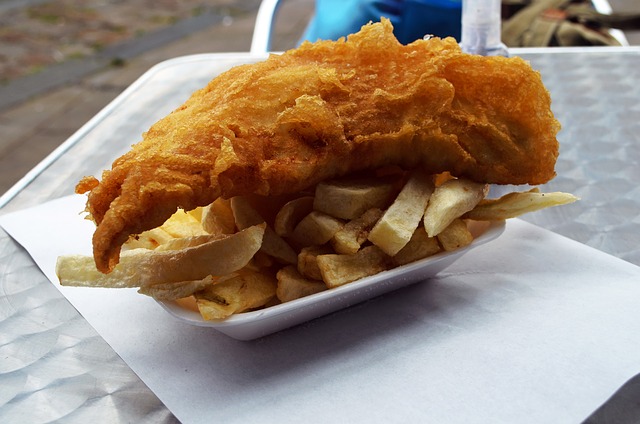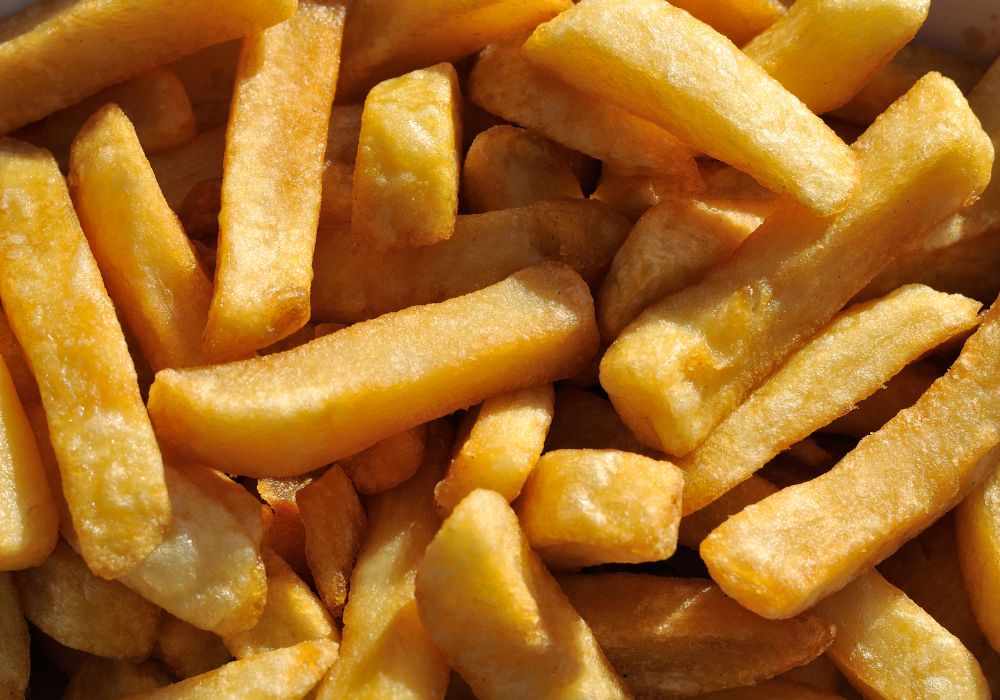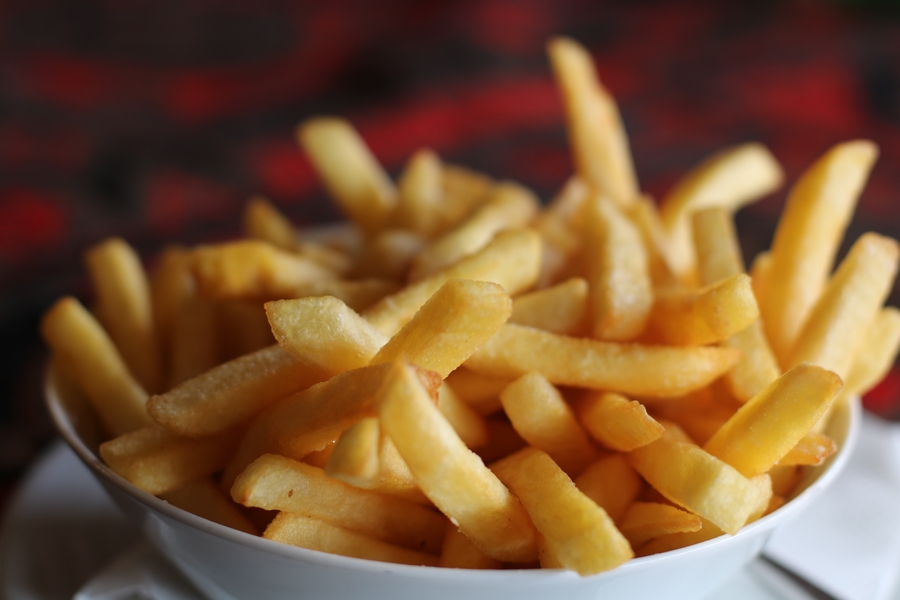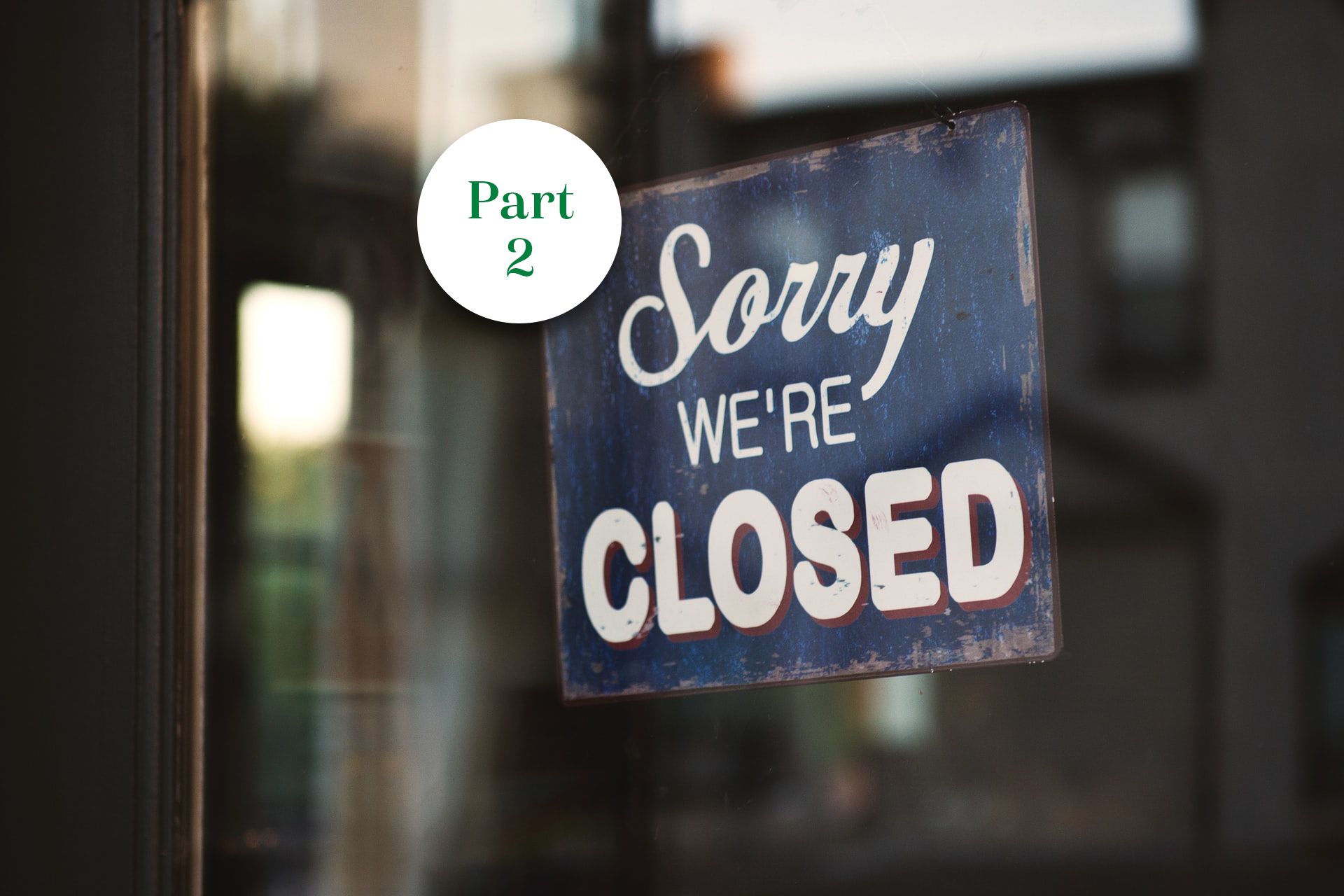When you need a twist on traditional fish and chips, this is the recipe for you. Salmon is a wonderfully versatile fish, and although it’s not commonly used in this way, it works wonderfully well for deep frying! The light and crispy batter is perfectly contrasted with the flaky pink salmon, creating a fresh and delicious version of fish and chips that has a delightful gourmet touch.
Deep fried battered salmon recipe
Serves 4 people
Prep Time: 15 to 20 minutes
Cook Time: 15 to 20 minutes
Nutritional Information: 2.64g of sodium, 12g of fat, 80g of protein, 70g of carbohydrate, 5g of sugar and 559 calories
Equipment
- Deep fryer or large pot
Ingredients
- 4 x salmon fillets, skin off
- 100g of plain white flour
- 2 large eggs, yoke and white separated
- 175ml of iced water
- Salt and pepper to taste
- 2TBS palm oil
- Palm oil for frying
- Dill and fresh lemon for garnish
Method
Step 1. Add the flour to a large bowl and gently mix in the egg yolks, iced water, pinch of salt and pepper, and 2 tablespoons of palm oil until combined.
Step 2. In a separate bowl, whisk the egg whites until they form stiff peaks.
Step 3. Slowly fold the egg whites into the flour mixture until it forms a smooth, silky batter.
Step 4. Heat the remaining palm oil in a deep fat fryer or deep pot until it reaches 160 degrees Celsius. If you don’t have cooking thermometer, you can test it by putting a small cube of bread into the oil. If it gets fried to a golden brown, the oil is ready for you to start frying your fish.
Step 5. Dip the fillets of salmon into the batter one at a time. Place them slowly and carefully into the hot palm oil.
Step 6. Let them fry until they turn a golden-brown colour, turning them occasionally with a slotted metal spoon until they are cooked through. Salmon cooks quickly, so this should take just 8-9 minutes.
Step 7. Take your fish out of the oil, placing it on kitchen paper so that the excess oil can drain off.
Step 8. Serve immediately with a garnish of fresh dill and a lemon wedge. Deep fried battered salmon goes with so many great sides, including buttered new potatoes, a fresh salad, steamed spring greens, or – of course – freshly fried chips!
Reasons why we love salmon
Salmon is one of the most popular eating fishes for good reason!
Flavour
Salmon appeals to most palettes, with a full flavour, solid yet flaky texture, and delicate oil.
Colour
The iconic pink of fresh salmon looks appealing on any plate, whether it’s accompanied by golden fried chips, fresh spring greens, or creamy mash.
Nutrition
Salmon is known as a superfood because of its high concentration of nutrients. As an oily fish, it contains plenty of good oils like omega 3 fatty acids, which are heart healthy and combat bad cholesterols and inflammation while supporting brain health. This fish also contains vitamin B12, which is essential for a healthy red blood cells and central nervous system, and selenium, which is important for metabolic and reproductive health.
Types of salmon
Salmon are usually classified by the ocean they live in. In the UK, we get the majority of our salmon from Scotland, but you can get salmon from Norway, Canada, and almost anywhere in the world. The most common types of salmon are:
Scottish wild salmon
Salmo Salar is a firm fleshed silver fish caught on the Scottish coast. It has a darker grey/black back and a pale silver belly, with flesh that is a deep pink in colour. They can range from 1.5kg to a massive 20kg, and can be bought whole or boxes on ice, or fresh. There are fishing regulations that specify the environmentally friendly ways this fish can be caught. It’s the most common salmon in the UK.
West Wales Salmon
This fish is caught off the coast of Wales just before they reach the rivers. This is done using small baskets known as coracles, which is a very traditional and sustainable method. The fish are silver with a black spotted back, and they have firm, watermelon-coloured flesh.
Scottish farmed salmon
This is the same Atlantic species that can be caught in the wild, only they are farmed in fish farms. They are very similar to their wild-caught cousins in terms of flavour, nutrients, and texture, although many people prefer wild-caught fish. These salmon are usually more affordably priced and are a highly sustainable option.
Pacific pink salmon
These fish are very rare this side of the world, but they’ve been found lately in rivers in Scotland and England! They were originally introduced into Russian rivers and are making their way west. They’re still rare, so don’t expect to find them on the menu too soon.
How to choose the best piece of fish for deep fried salmon
For this recipe, any type of salmon will do. However, the quality of the salmon you choose is very important – much more important than the type! Here’s how to choose the best piece of salmon.
Use your nose
When selecting fresh salmon, it should have a light, clean ocean smell. It shouldn’t smell overwhelmingly fishy or strong.
Test the flesh
The flesh should be firm and moist, not dry. If you gently press the flesh, it should spring back into position quite quickly. If the dent remains for a while, it’s probably been frozen – and that means very soft flesh.
Look at the colour
Did you know that there’s a standard for the colour of good salmon? It’s called a salmofan! But if you don’t have one handy, just look for yourself – the flesh should be a deep, red-pink colour and the skin should be shiny silver with a slight blue tone.
Check the cut
Unless you are buying a whole fish and cutting it yourself, you should be able to get your fish in a ‘chef’s select’ or ‘restaurant style’ cut. You can also ask for fillet cuts. This will make sure that each piece cooks evenly, retaining its juiciness and flavour.
What is the best oil for deep frying salmon?
You’ll need oil with a high smoke point because you’ll be frying at a high temperature of 160 degrees Celsius, and you don’t want the oil to burn. This causes bitterness and breaks down healthy fatty acids and the nutritional content of your food, as well as introducing carcinogens. Good oils to use include sunflower oil, vegetable oil, and refined olive oil. However, we’ve tried and tested many frying oils and palm oil is simply the best option! It has a high smoke point of 235 degrees Celsius, so your fish comes out perfectly cooked in a golden, crispy batter. It’s why it’s the oil of choice for restaurants and chippies across the UK.
FryMax palm oil – the oil of choice for deep fried perfection, every time
FryMax is the UK’s largest supplier of frying oil to fish and chip shops and other food outlets and restaurants since 1954. And our oil doesn’t just give you the best results every time you heat up the frying pan, it’s the best choice for sustainability too. Since 2013, Frymax oil has been made from fully-segregated, RSPO-certified palm fruit oil. Not a drop of non-certified oil goes into the production of Frymax. Home cooks and restaurateurs can rest assured that, when they choose Frymax, they are supporting sustainable, ethical palm oil production. For more information don’t hesitate to get in contact with the helpful Frymax team.
Become a Frymax member today to gain access to exclusive content, expert frying advice and the chance to enter our fantastic competitions.






